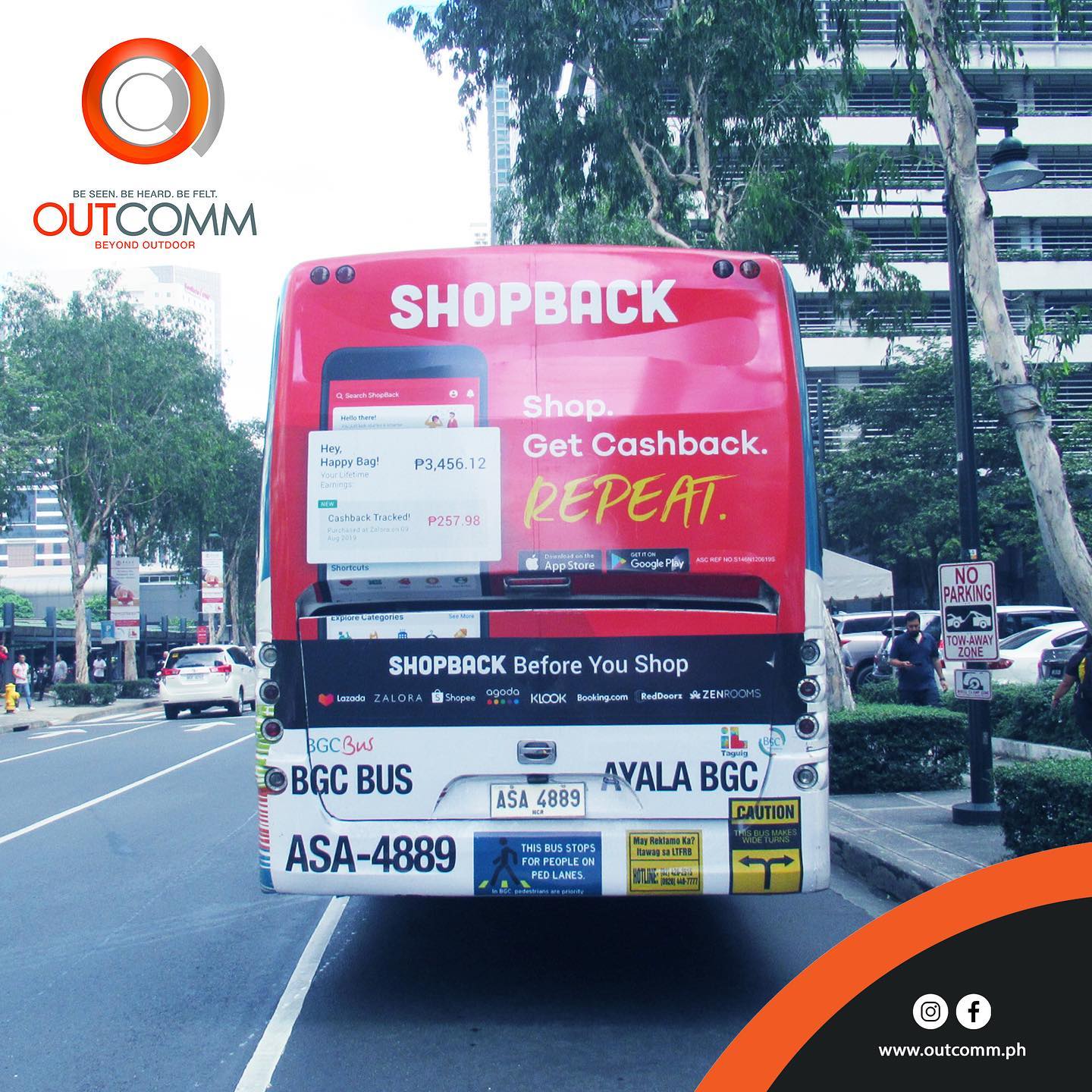Boost Your Company with Transit Advertising Philippines
Boost Your Company with Transit Advertising Philippines
Blog Article
Understanding the Function of Transit Marketing in Enhancing Brand Presence and Consumer Interaction
Transit advertising and marketing has become an essential component in the marketing landscape, using special chances for brands to boost their presence and engage customers properly. With the capacity to get to a captive and diverse audience throughout their day-to-day commutes, these advertising and marketing strategies are not just regarding presence; they are about producing purposeful links with potential clients. As we check out the complex advantages and innovative methods within transportation advertising, it ends up being necessary to think about exactly how these components jointly influence consumer perception and habits, questioning about their long-term influence on brand loyalty.
Meaning of Transportation Marketing
Transit marketing describes the method of advertising items, services, or brands with advertisements placed in and around public transportation systems. This form of advertising encompasses a range of placements, including posters on trains and buses, electronic screens at transit terminals, and covers on the outside of automobiles. It intends to reach a diverse target market, taking advantage of the high foot traffic connected with public transit.
Transportation advertising is purposefully placed to catch the attention of travelers, that often spend considerable time taking a trip or waiting. By incorporating ads right into the everyday routines of individuals, brands can produce a long-term impression and foster brand acknowledgment. The tool is especially reliable in urban environments, where public transport is a main mode of travel.
In addition, transit marketing can assist in localized targeting, allowing organizations to reach specific demographics based on transportation paths and terminal locations. As city populations expand and the use of public transport rises, this marketing approach has gotten prominence as a crucial component of integrated advertising and marketing methods. The vibrant nature of transit advertising and marketing, combined with its capacity to engage consumers in a restricted environment, emphasizes its importance in modern advertising and marketing methods.
Advantages of Transit Marketing
The effectiveness of transportation advertising exists in its ability to provide a plethora of benefits to brand names seeking to improve presence and interaction. One of the key advantages is the extensive reach it uses; transportation ads can properly target diverse demographics throughout metropolitan areas, reaching both travelers and pedestrians alike. This wide direct exposure substantially boosts brand recognition.
One more advantage is the high frequency of perceptions. As transportation lorries take a trip along established paths and quit at numerous areas, they create repeated direct exposure that enhances brand messages. This frequency promotes knowledge, which is essential in consumer decision-making.
Transportation advertising is likewise cost-effective compared to other media systems. Offered its large reach and potential for high perceptions, brands typically experience a lower cost per thousand impacts (CPM), optimizing their advertising budget plan.
Moreover, transit ads can develop a sense of area link. By straightening with neighborhood transit systems, brand names can resonate with local target markets and cultivate a feeling of regional pride. This local technique boosts brand name commitment and engagement, making transit advertising and marketing a compelling option for businesses intending to strengthen their presence on the market.

Effective Techniques for Transit Campaigns
To make the most of the effect of transportation projects, brand names ought to utilize critical planning and execution customized to their target audience. First, identifying the demographic characteristics of the audience utilizing public transportation is critical. This enables brand names to produce individualized messaging that reverberates with possible clients.
Next, picking the best transit tools is official source important. Whether making use of bus covers, train posters, or electronic screens, each medium has distinct benefits that can enhance you can try this out visibility. For example, vibrant visuals on bus covers can bring in attention, while electronic ads can be updated often to reflect prompt promotions.
Additionally, incorporating a natural branding method across transit systems guarantees consistency and strengthens the brand name's identity. Making use of captivating designs and remarkable taglines will enhance brand name recall amongst commuters.
By using these techniques, brand names can successfully harness the possibility of transportation advertising and marketing, promoting better recognition and connection with their target audience. Eventually, a well-executed transportation campaign can drive significant development in brand name exposure and customer engagement.

Gauging Effect and Interaction
In assessing the effectiveness of transit ad campaign, precise measurement of influence and engagement is essential for brands looking for to maximize their marketing methods. Metrics such as reach, regularity, and impressions give fundamental information to evaluate exposure. Analyzing these variables assists determine the number of potential consumers are subjected to the promotions throughout their day-to-day commutes.
Involvement can be further assessed through customer communications, such as web site web traffic, social media points out, and direct responses to calls-to-action featured in the advertisements. Using devices like QR codes or unique URLs can promote monitoring of consumer actions straight linked to transit campaigns. Surveys and responses systems also function as useful approaches official website to collect qualitative data on customer perceptions and recall of the ad.
Additionally, progressed analytics and acknowledgment versions can correlate transportation exposure with subsequent purchasing habits, offering insights into the return on financial investment. By utilizing an extensive technique that integrates qualitative and quantitative measures, brand names can create a nuanced understanding of their transit advertising and marketing influence. Ultimately, this data-driven strategy allows brand names to improve their projects, guaranteeing they reverberate effectively with target market and boost overall brand name visibility.
Study of Effective Campaigns
Effective transit ad campaign offer as engaging examples of how effective methods can elevate brand exposure and engagement. Transit Advertising Philippines. One noteworthy case is the "I Love New york city" project, which changed the city's photo and brought in countless vacationers. By using metro ads, billboards, and bus wraps, the campaign developed a strong, natural brand name identification, causing a significant uptick in tourism and neighborhood company patronage
An additional excellent campaign is Coca-Cola's "Share a Coke" initiative, which leveraged transportation marketing to customize the brand name experience. By featuring prominent names on advertising materials across different transit platforms, Coca-Cola fostered a much deeper psychological connection with customers, encouraging them to share their experiences on social networks.
Additionally, the "Got Milk?" campaign effectively used public transport advertisements to get to a wide target market, strengthening the message of the importance of milk in a balanced diet regimen. The project saw a quantifiable boost in milk usage in target demographics.
These study illustrate that when carried out attentively, transit advertising can dramatically improve brand name exposure, foster consumer interaction, and drive measurable results, showing its important duty in modern advertising and marketing techniques. - Transit Advertising Philippines
Verdict
In final thought, transportation advertising offers as an important device for enhancing brand exposure and promoting consumer interaction. Eventually, the capability to determine interaction and examine effective situation research studies highlights the efficiency of transit marketing in driving brand loyalty and consumer communications.
Transportation advertising and marketing has actually emerged as a critical element in the marketing landscape, offering unique opportunities for brands to elevate their presence and involve consumers effectively.Additionally, transit marketing can promote localized targeting, allowing businesses to get to details demographics based on transportation routes and station places.In reviewing the effectiveness of transit advertising campaigns, precise dimension of effect and interaction is vital for brands looking for to optimize their advertising strategies.Effective transit advertising and marketing campaigns offer as compelling instances of how reliable techniques can elevate brand visibility and interaction.In conclusion, transit advertising offers as a vital device for enhancing brand presence and promoting customer interaction.
Report this page